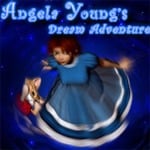- Wondering how to get Monopoly GO! free rolls? Well, you’ve come to the right place. In this guide, we provide you with a bunch of tips and tricks to get some free rolls for the hit new mobile game. We’ll …
Best Roblox Horror Games to Play Right Now – Updated Weekly
By Adele Wilson
Our Best Roblox Horror Games guide features the scariest and most creative experiences to play right now on the platform!The BEST Roblox Games of The Week – Games You Need To Play!
By Sho Roberts
Our feature shares our pick for the Best Roblox Games of the week! With our feature, we guarantee you'll find something new to play!All Grades in Type Soul – Each Race Explained
By Adele Wilson
Our All Grades in Type Soul guide lists every grade in the game for all races, including how to increase your grade quickly!
Angela Young’s Dream Adventure Review
No-one would blame you for taking one quick look at Angela Young’s Dream Adventure and writing it off as just another sloppily thrown-together hidden object game. It has typos a plenty, the story is barely intelligible, and its characters look like poorly-proportioned wax statues. Look past its rough edges, though, and you’ll see that it’s not just more of the same old, same old.

No-one would blame you for taking one quick look at Angela Young’s Dream Adventure and writing it off as just another sloppily thrown-together hidden object game. It has typos a plenty, the story is barely intelligible, and its characters look like poorly-proportioned wax statues. Look past its rough edges, though, and you’ll see that it’s not just more of the same old, same old.
To see Dream Adventure‘s charm, you’ll have to pretty much completely ignore its story, which is some sort of nonsensical gibberish about a wizard, the Lord of Nightmares, and Angela’s big-headed cat, Felix. It borrows more than a little from Alice in Wonderland – Angela is even dressed just like the Disney version of Alice – but the few lines of dialog do little to pull the story together. The incomprehensible stringing together of events is shrugged off and chalked up to the whimsical nature of dreams. Why is Felix suddenly on a rock next to an enormous toy dinosaur? Why is Angela suddenly in a winterscape? What’s the deal with the two staircases? Who knows? It’s all a dreaaaaaaaam.
So your motivation for traveling from location to location is a bit mystifying, but the gameplay once you get there is solid. Dream Adventure‘s hidden object levels are surprisingly varied and challenging. Not only will you have to find the expected list of items in the room full of junk, but you’ll also have to find matching pairs of items, find items based only on their silhouettes, find several copies of a particular item, and please a trio of elves by finding the items they request before they grow too impatient.
Though the item searching does suffer a wee bit from language issues – I’ll leave it up to you to decide what a "candle sniffer" looks like – the levels themselves are very well done. You may be asked to find a tea kettle in more than one room, but it will be a different kettle, rather than the same old image dropped in a new location. Rooms will be reused from level to level, but objects will be rearranged, added, or removed to keep it feeling fresh. Even those that stay in place are well-hidden without resorting to the kind of cheap trickery that inferior games use, like concealing all but the tiniest sliver of the item to make it harder to find.
Puzzle levels break up the hide-and-seek action with mixed results. Some, like the pictures that need to be reassembled by either sliding or rotating pieces, are a bit too easy, but others offer more challenge. The presence of traditional matchstick puzzles is a bit curious – puzzle fans will have seen and solved those chestnuts many times over already – but shuffling colored bottles to free trapped fairies and lining up concentric rings to reveal a design is just the right amount of tricky.
The most unfortunate thing about Dream Adventure is that it’s over so quickly. Even at a leisurely pace, it won’t take you much longer than three hours to complete. It seems somewhat unreasonable to say that a game offering more than fifty levels has somehow still shortchanged the player, but I was certainly left wanting more when the credits began to roll. Then again, that may have been by design; the ending of Dream Adventure leaves plenty of room for a sequel, so perhaps the developers simply wanted to whet our appetites.
Angela Young’s Dream Adventure lacks polish in many areas and could certainly be longer, but it’s an enjoyable experience for the time it lasts.

The good

The bad
More articles...
Monopoly GO! Free Rolls – Links For Free Dice
By Glen Fox
Wondering how to get Monopoly GO! free rolls? Well, you’ve come to the right place. In this guide, we provide you with a bunch of tips and tricks to get some free rolls for the hit new mobile game. We’ll …Best Roblox Horror Games to Play Right Now – Updated Weekly
By Adele Wilson
Our Best Roblox Horror Games guide features the scariest and most creative experiences to play right now on the platform!The BEST Roblox Games of The Week – Games You Need To Play!
By Sho Roberts
Our feature shares our pick for the Best Roblox Games of the week! With our feature, we guarantee you'll find something new to play!All Grades in Type Soul – Each Race Explained
By Adele Wilson
Our All Grades in Type Soul guide lists every grade in the game for all races, including how to increase your grade quickly!







